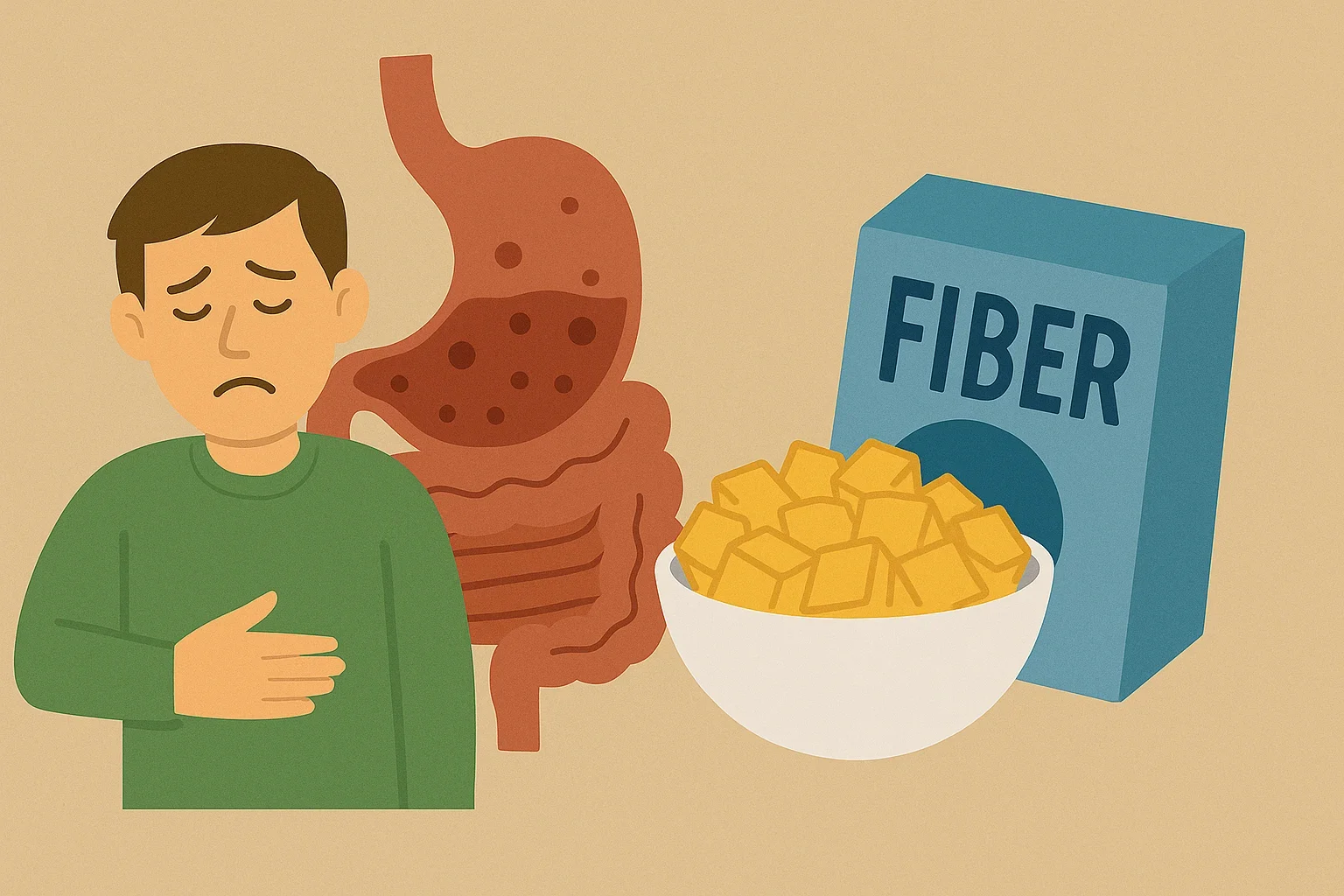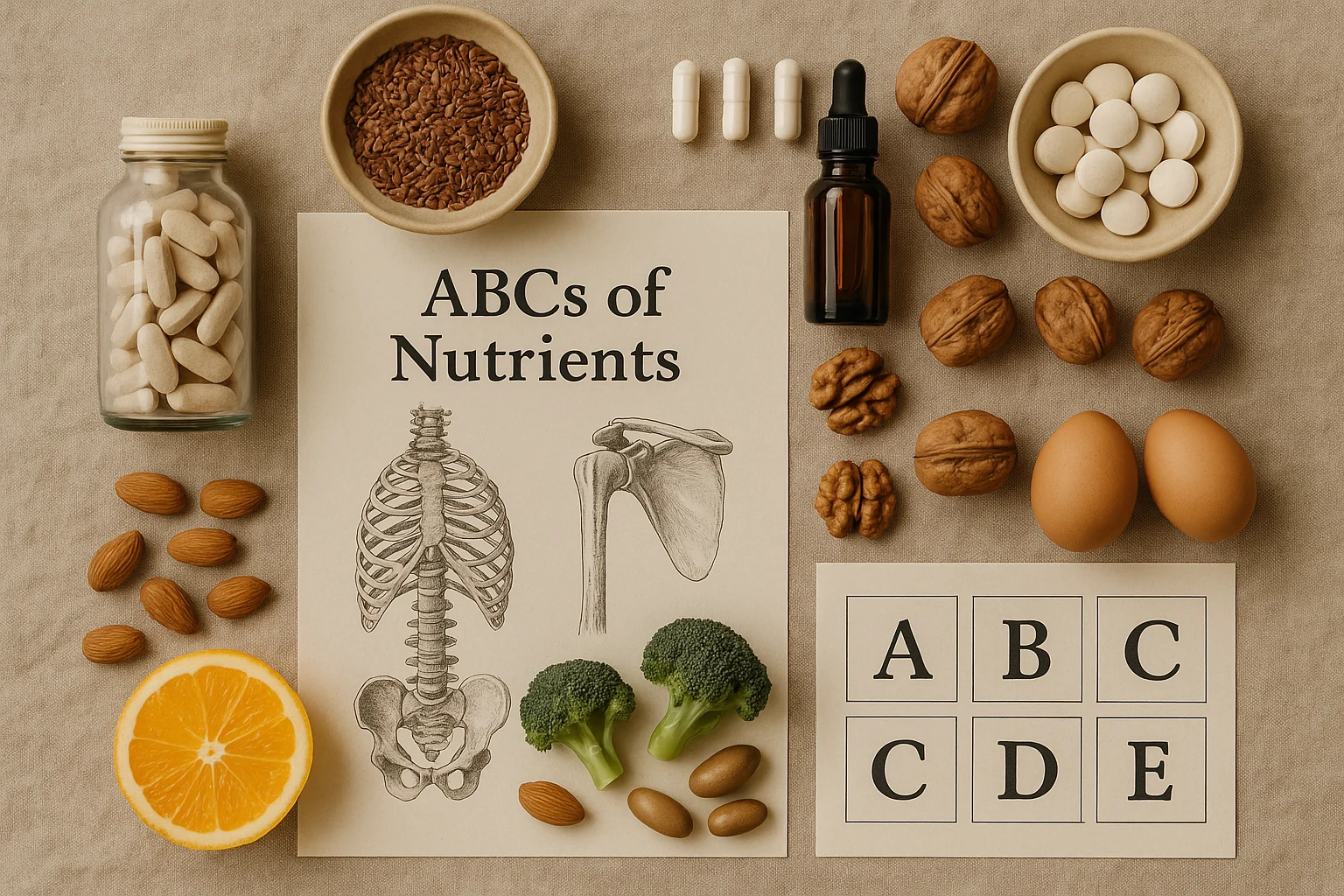For as long as I can remember, the health and nutrition world has treated fiber as a digestive cure-all. Constipated? Eat more fiber. Bloating? Fiber. Irritable bowel syndrome (IBS)? Fiber. Acid reflux? Fiber again. It’s become a reflexive recommendation — handed out like a universal solution for every digestive complaint imaginable.
But there’s a glaring problem with this advice that no one seems to want to talk about: fiber is indigestible. If the body cannot digest fiber, how can it possibly help with digestion? Advising someone to eat more fiber to fix indigestion is like telling someone to add more oil to a car engine that’s already misfiring, it doesn’t just miss the point, it makes the problem worse.
Let’s start with the basics.
Fiber is a carbohydrate, but unlike sugars and starches, it’s held together by beta-glycosidic bonds — chemical bonds that human digestive enzymes cannot break down. That’s why fiber passes through the stomach and small intestine largely unchanged. Digestible carbohydrates (like glucose and starch) are broken down by amylase and other digestive enzymes in the mouth and small intestine. But fiber? It simply moves through the digestive tract, untouched, because humans lack the enzyme cellulase needed to break it down. This raises an obvious but uncomfortable question: if fiber isn’t digestible, how can it help with digestion? How does something the body cannot process improve the process of processing? It’s a contradiction that seems to have been swept under the rug, possibly because fiber’s reputation has become too entrenched to challenge.
Since the body can’t digest fiber, it heads straight to the large intestine (colon), where it gets handled in two ways. Insoluble fiber, like cellulose and wheat bran, stays intact. It adds bulk to stool and increases bowel movement frequency by stimulating mechanical pressure in the gut. It’s essentially acting as a biological broom but not in a particularly refined way. On the other hand, soluble fiber, like inulin and beta-glucans, dissolves in water and forms a gel. While the body can’t digest it, gut bacteria in the colon can ferment it, producing gases (like methane and hydrogen) and short-chain fatty acids (SCFAs) as metabolic by-products.
That’s where the problem starts. The body’s only real response to fiber is to either push it through the colon as waste or rely on gut bacteria to ferment it. Fermentation creates gases that lead to bloating, cramping, and pressure. In other words, the same symptoms fiber is supposed to fix.
Despite its indigestibility, fiber continues to be prescribed for digestive issues based on a few theoretical benefits. Insoluble fiber increases stool bulk and speeds up transit time, which is why it’s recommended for constipation. But bulk alone doesn’t equal better digestion. It just means more volume passing through your system. Soluble fiber forms a gel in the stomach, slowing gastric emptying. This is thought to help with blood sugar control and fullness, but in people with slow gastric motility (like gastroparesis), it can make things significantly worse.
Fermentable fibers (like inulin and beta-glucans) act as prebiotics, feeding beneficial gut bacteria. But fermentation also produces hydrogen, methane, and carbon dioxide gases that cause bloating, distension, and discomfort. There’s also the metabolic side of fiber’s reputation: soluble fiber binds to bile acids and reduces cholesterol while slowing glucose absorption, improving glycemic control. That’s great for metabolic health but irrelevant to digestive comfort. In theory, these benefits sound promising. In practice, they often create more problems than they solve especially when it comes to functional GI disorders.
When Fiber Makes Things Worse
For people with certain digestive conditions, fiber isn’t just unhelpful, it’s downright harmful. In functional dyspepsia, which is essentially chronic indigestion marked by early satiety, upper abdominal discomfort, and bloating after eating, fiber slows gastric emptying which is already impaired in functional dyspepsia. Adding more bulk or slowing digestion only intensifies discomfort. Gastroparesis, which involves delayed stomach emptying due to poor muscular contractions in the stomach, is another case where fiber backfires. Soluble fibers like psyllium and inulin form a thick gel in the stomach, further slowing down emptying and increasing nausea and pressure. Fermentation produces gases, worsening the feeling of fullness and bloating. Small Intestinal Bacterial Overgrowth (SIBO) is another example. SIBO occurs when bacteria from the colon migrate into the small intestine. Fermentable fibers provide fuel for bacterial overgrowth, intensifying bloating, cramping, and malabsorption. In SIBO, more fiber means more fuel for the problem. Irritable Bowel Syndrome (IBS) is a functional disorder marked by alternating diarrhea, constipation, cramping, and bloating. High-FODMAP fibers (like fructans and galacto-oligosaccharides) worsen fermentation and water retention, triggering diarrhea and cramping. Insoluble fiber, particularly from whole grains, can also increase mechanical irritation, worsening discomfort.
Inflammatory Bowel Disease (IBD), which includes ulcerative colitis and Crohn’s disease, is another area where fiber causes more harm than good. High-fiber diets increase stool volume and frequency, worsening diarrhea and abdominal pain during flares. Mechanical irritation from insoluble fiber can worsen inflammation. Finally, Gastroesophageal Reflux Disease (GERD) is made worse by fiber for similar reasons. Soluble fiber increases gastric pressure and slows gastric emptying, which pushes stomach contents back into the esophagus, worsening reflux and heartburn.
The Evidence Problem
What’s more frustrating is that there’s not even strong evidence supporting fiber as a digestive remedy. A 2012 meta-analysis on constipation found that removing fiber from the diet improved symptoms in patients with chronic constipation. Studies on fiber and IBS consistently show that increasing fiber intake worsens symptoms in many patients, especially gas and bloating. Research linking fiber to improved gut health is largely observational correlation, not causation.
So why are we still prescribing fiber for digestive issues? The answer probably lies in habit and industry inertia rather than sound clinical evidence. Once a health recommendation becomes ingrained in the public consciousness, it takes a lot more than conflicting evidence to change it.
Conclusion
Fiber’s reputation as a digestive cure-all is built more on tradition than science. If fiber cannot be digested, how can it improve digestion? The truth is, that fiber may increase stool volume and alter gut transit but it doesn’t correct the underlying causes of indigestion, slow motility, or microbial imbalance.
Fiber’s mechanical and fermentative properties often exacerbate symptoms like bloating, gas, and discomfort, especially in patients with IBS, SIBO, and gastroparesis. Treating a problem with a substance that bypasses the digestive process entirely is not just misguided, it’s fundamentally absurd.








